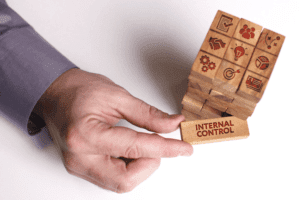W celu ustalenia, ile kosztuje kilogram za skup pojazdu w Auto Kurek, zachęcamy Państwa do kontaktu z nami. Nasza firma działa na terenie całego kraju i przyjmuje wszystkie samochody niezależnie od stanu technicznego, marki, rocznika czy gabarytów. Zajmujemy się kompleksowo skupem i sprzedażą aut, a także ich części czy pozyskanych surowców wtórnych. Naszą domeną jest profesjonalna kasacja pojazdów, którą przeprowadzamy zawsze legalnie i zgodnie z prawem, a klientom wydajemy wszystkie niezbędne do wyrejestrowania pojazdu zaświadczenia. Monety lub złoto możesz również zgłosić chęć ich sprzedaży. Skupy działające w Twojej lokalizacji otrzymają ofertę oraz mogą dokonać jej dokładnej lub przybliżonej wyceny.
Ceny tuczników na koniec kwietnia: W skupach stagnacja lub lekkie spadki
W takim razie sprawdźmy, jakie stawki oferują skupy za żywiec. Skup pojazdów Auto Kurek proponuje większą wartość samochodu, który jeszcze samodzielnie się porusza. Klienci mogą także otrzymać dodatkowy zysk za nadające się do sprzedaży części.
Mimo spadającej produkcji i niższego pogłowia, ceny świń nie rosną
Także Bartosz Czarniak z Polskiego Związek Hodowców i Producentów Trzody Chlewnej Polsus ocenia, że niskie ceny zbóż sprzyjają obecnie produkcji świń. Z najnowszych danych Komiji Europejskiej wynika, że w 2023 roku produkcja wieprzowiny w UE spadnie o 6,6 proc., pomimo niższych cen pasz. Nierosnący popyt krajowy i niższy popyt ze strony Chin spowolnią eksport mięsa z UE o 16 proc.
Aktualne ceny skupu tuczników wbc za granicą
Część z nich nie posiada możliwości sprawdzenia wartości konkretnego auta. Dużo prostszym rozwiązaniem jest elektroniczny cennik samochodów używanych udostępniony na naszej stronie. Prowadzimy skup aut używanych i udostępniamy darmowo profesjonalne narzędzie, dzięki któremu darmowa wycena samochodu jest szybka i prosta. W Niemczech notowania tuczników na dużej giełdzie VEZG wzrosły o 5 centów. Stawka za tuczniki ustalona 14 lutego wynosi 2,15 euro/kg.
Ostatecznie na to, ile kosztuje skup pojazdu od kilograma masy wpływa również bieżąca sytuacja rynkowa. Warto uwzględnić także dodatkowe koszty, takie jak transport czy ewentualnie brakująca masa lub istotne elementy samochodu. Zawsze podczas sprzedaży należy mieć przy sobie dowód rejestracyjny pojazdu oraz dowód osobisty – bez nich sprzedaż samochodu w naszym skupie aut nie jest możliwa. Oczywiście po procesie złomowania wystawiamy dokument potwierdzający, który należy pokazać w wydziale komunikacji w procesie wyrejestrowania. W Niemczech notowania tuczników na dużej giełdzie VEZG nie zmieniły się. Stawka za tuczniki ustalona 21 lutego wynosi 2,15 euro/kg.
- Także Bartosz Czarniak z Polskiego Związek Hodowców i Producentów Trzody Chlewnej Polsus ocenia, że niskie ceny zbóż sprzyjają obecnie produkcji świń.
- (o 6,43 euro) wyższa niż średnio w UE i ukształtowała się na poziomie 232,25 euro/100 kg.
- Ceny macior w skupach wynoszą 3,50–6,30 zł/kg, przy średniej na poziomie 5,10 zł/kg.
- Ponadto cena w Danii nie uległa zmianie i w 14.
- W Niemczech notowania tuczników na dużej giełdzie VEZG pozostają bez zmian.
W Niemczech notowania tuczników na dużej giełdzie VEZG pozostają bez zmian. Po ubiegłotygodniowej podwyżce o 5 eurocentów, stawka za tuczniki ustalona 6 marca wynosi 2,20 euro/kg. Przeliczając na złotówki, niemieckie tuczniki skupowane są po ok. 9,48 zł/kg. Większość rynków rolnych charakteryzuje się jednak dużą niestabilnością, a zmiany zachodzące na nich bywają bardzo dynamiczne. Prowadząc jakikolwiek sektor produkcji rolnej – czy to roślinnej, czy to zwierzęcej – niezbędne jest zatem stałe monitorowanie cen skupu. Ponadto śledzimy notowania największych światowych giełd, co pozwala przewidzieć jak w najbliższych tygodniach będą kształtowały się ceny skupu w Polsce.
Ściśle mówiąc, ostatnie spadki cen skupu w większości najważniejszych podmiotów skupujących skłaniają środowiska producentów trzody chlewnej do domniemań o zmowę cenową. Jedną z przyczyn stabilizacji cen świń w Polsce jest fakt, że w Niemczech notowania tuczników na dużej giełdzie VEZG kolejny tydzień z rzędu pozostały niezmienione. Stawka za tuczniki ustalona 22 listopada nadal wynosi 2,10 euro/kg. Przeliczając na złotówki, niemieckie tuczniki skupowane są po ok. 9,17 zł/kg.
W jej trakcie nasz wykwalifikowany personel oceni fachowo realną wartość auta, która może przekraczać pierwotną wycenę wykazaną przez nasz cennik samochodów używanych. Dzieje się tak na przykład, jeśli wyceniany pojazd posiada dodatkowe wyposażenie. Również trudności natury formalnej związane ze sprzedażą poszczególnych pojazdów mogą prowadzić do zaniżenia ich wyceny.
W związku z chęcią stworzenia największego katalogu skupów w Polsce cały czas staramy się zwiększać ilość kategorii w serwisie nawet o te mniej popularne. W związku z bezpłatną subskrypcją zgadzam Jak zarobić na kryptowalutach się na otrzymywanie na podany adres email informacji handlowych. – Nie wiem, a tak naprawdę, moim zdaniem, to właśnie to determinuje teraz to, czy zakładom opłaca się podnieść cenę.
Polscy rolnicy mają jednak nadzieję na podwyżki z uwagi na zbliżający się sezon świąteczny, który zazwyczaj był impulsem do wzrostu. Komisja Europejska przyznaje równoważność amerykańskim izbom rozliczeniowym akcji Czy i w tym roku ceny świń wzrosną przed świętami? Wpływ na to, ile za skup aut płaci Auto Kurek, ma wiele czynników.
Nadzieję niesie zbliżający się sezon grillowy. Jednakże dalszym wzrostom cen będzie przeszkadzać obecna stagnacja na rynku niemieckim. Natomiast Rodzaje zleceń na międzynarodowym rynku Forex w Niemczech na dużej giełdzie VEZG ceny świń znów runęły w dół. Stawka za tuczniki została obniżona o 10 centów do poziomu 2,10 euro/kg.












Recent Comments